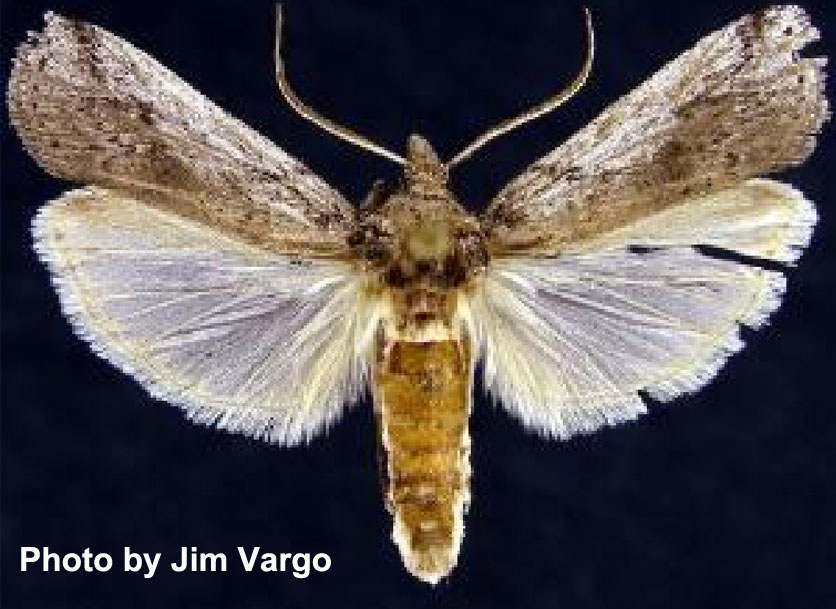Melitara doddalis Dyar
Synonymy and Types
Melitara doddalis Dyar, 1925, Ins. Insc. Mens.,13: 13.
Type locality: Mesilla Park, New Mexico. Type deposition: National Museum of Natural History, Washington.
Diagnosis
Adult
This species can be differentiated from other Melitara by a combination of the following characters. The labial palpus of the male is porrect, rather than ascending, the terminal area of the forewing lacks a series of short black lines, the postmedial line of the forewing is deeply angulate, and the forewing has extensive dark-brown or black suffusions in the posterior half.
Larva
Unknown.
Distribution
This species occurs in southern Arizona, southern New Mexico, southwestern Texas, and northern Mexico.
Life History and Larval Hosts
Life History: Oviposition occurs in September and October, and the incubation period is 12 to 19 days. The young larvae grow slowly during the winter months. Most of the feeding and host damage occurs during April through July. Plants are often killed by larvae that tunnel downward into the basal segments. Larvae leave the host to pupate on the ground during August and September. Moth flight occurs during September to early October Neunzig (1997).
Hosts: Opuntia ficus-indica (L.), O. macrorhiza Engelmann var. macrorhiza, O. phaeacantha Engelmann var. phaeacantha.
References
Neunzig (1997)


